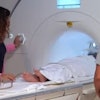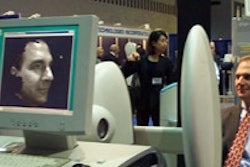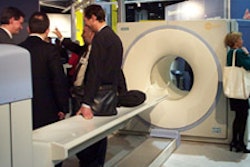SALT LAKE CITY - If you’re willing to put in a little sweat equity, you can save big on a PACS installation by buying hardware off the shelf rather than from a PACS vendor. That’s the lesson learned by radiologists from the University of Wisconsin in Madison, where the radiology department is completing a software-only PACS network.
In a SCAR presentation on Thursday, Dr. Gary Wendt, a neuroradiologist and vice president of informatics at the hospital, described his experience with the installation. The hospital is a 463-bed facility that conducts 250,000 exams a year, producing 14 terabytes of data.
The university began its foray into digital image management in 1997 with the purchase of an ultrasound miniPACS system from ALI Technologies of Richmond, BC. In 1998, they began to consider adopting PACS across the entire hospital, and issued a request for proposal (RFP) for bids on the project.
What they received were bids that ranged from $1 million to $12 million for a full PACS network. After heavy negotiation, those bids were brought down to between $1 million and $6 million, but the university still felt it was getting a raw deal. One company, for example, proposed installing a 14-TB archive at a total cost of $500,000, Wendt said. The archive that the university ended up installing cost $170,000 for 118 TB of storage at a cost of 60¢ per GB.
The size of the bids prompted the university to examine the software-only approach. The university stuck with ALI software for multimodality applications, while purchasing Windows NT PCs and servers from Compaq of Houston. The facility’s archive is an advanced intelligent tape (AIT) changer from ADIC of Redmond, WA. The university negotiated three-year warranties with the manufacturers, and is able to have replacement parts shipped directly from the computer makers. The hardware was validated by ALI, Wendt said.
The main benefit of the software-only approach, obviously, is cost savings. In addition to the tape archive, the university implemented a RAID (redundant array of independent disks) archive with 3.5 TB of storage at a cost of $60 per GB -- far less than what a PACS vendor would have charged. But there are also other advantages, Wendt said. For one, it’s easier to tailor the archive to the needs of the organization. The approach also enables facilities to control their archive expenditures.
But the Wisconsin team's approach isn’t all fun and games. It can be tough to find the right personnel in today’s era of labor shortages, and training in-house personnel is another issue. Going the software-only route also puts the department on the hot seat should problems arise.
"You really have to learn about and take ownership of your PACS," Wendt said. "It’s different from a turn-key product. You can’t just sit down and enjoy yourself while the vendor sweats and installs it. You have to know how the system works and how it operates."
By Brian Casey
AuntMinnie.com staff writer
May 3, 2001
Click here to post your comments about this story in our PACS Digital Community. Please include the headline of the article in your message.
Copyright © 2001 AuntMinnie.com



















